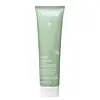What's inside
What's inside
 Key Ingredients
Key Ingredients

 Benefits
Benefits

 Concerns
Concerns

 Ingredients Side-by-side
Ingredients Side-by-side

Water
Skin ConditioningVitis Vinifera Fruit Water
Skin ConditioningDecyl Glucoside
CleansingGlycerin
HumectantSodium Cocoyl Glutamate
CleansingSucrose Cocoate
EmulsifyingAcacia Senegal Gum
MaskingXanthan Gum
EmulsifyingPropylene Glycol
HumectantCitric Acid
BufferingAloe Barbadensis Leaf Powder
Skin ConditioningSalicylic Acid
MaskingVitis Vinifera Juice
AntioxidantSodium Benzoate
MaskingPelargonium Graveolens Flower Oil
MaskingMentha Piperita Oil
MaskingCitral
PerfumingCymbopogon Citratus Leaf Oil
MaskingRosmarinus Officinalis Leaf Oil
MaskingCitronellol
PerfumingGeraniol
PerfumingPotassium Sorbate
PreservativeLinalool
PerfumingLavandula Hybrida Oil
EmollientMelissa Officinalis Leaf Oil
MaskingWater, Vitis Vinifera Fruit Water, Decyl Glucoside, Glycerin, Sodium Cocoyl Glutamate, Sucrose Cocoate, Acacia Senegal Gum, Xanthan Gum, Propylene Glycol, Citric Acid, Aloe Barbadensis Leaf Powder, Salicylic Acid, Vitis Vinifera Juice, Sodium Benzoate, Pelargonium Graveolens Flower Oil, Mentha Piperita Oil, Citral, Cymbopogon Citratus Leaf Oil, Rosmarinus Officinalis Leaf Oil, Citronellol, Geraniol, Potassium Sorbate, Linalool, Lavandula Hybrida Oil, Melissa Officinalis Leaf Oil
Water
Skin ConditioningSodium Lauroamphoacetate
CleansingSodium Trideceth Sulfate
CleansingLimnanthes Alba Seed Oil
Skin ConditioningCoco-Glucoside
CleansingCoconut Alcohol
EmollientPEG-120 Methyl Glucose Dioleate
EmulsifyingGlycerin
HumectantPhenoxyethanol
PreservativeIsopropyl Alcohol
SolventCarbomer
Emulsion StabilisingPolysorbate 20
EmulsifyingChlorphenesin
AntimicrobialCitric Acid
BufferingDisodium Phosphate
BufferingAniba Rosaeodora Wood Oil
AstringentLinalool
PerfumingEthylhexylglycerin
Skin ConditioningXanthan Gum
EmulsifyingSodium Citrate
BufferingBulnesia Sarmientoi Wood Oil
MaskingPelargonium Graveolens Flower Oil
MaskingSodium Hydroxide
BufferingAmyris Balsamifera Bark Oil
MaskingCymbopogon Martini Oil
MaskingRosa Damascena Flower Oil
MaskingTocopherol
AntioxidantDaucus Carota Sativa Seed Oil
EmollientMimosa Tenuiflora Bark Extract
Skin ProtectingOrmenis Multicaulis Oil
MaskingPiper Nigrum Fruit Extract
PerfumingSalvia Sclarea Oil
MaskingSantalum Album Oil
MaskingCI 19140
Cosmetic ColorantWater, Sodium Lauroamphoacetate, Sodium Trideceth Sulfate, Limnanthes Alba Seed Oil, Coco-Glucoside, Coconut Alcohol, PEG-120 Methyl Glucose Dioleate, Glycerin, Phenoxyethanol, Isopropyl Alcohol, Carbomer, Polysorbate 20, Chlorphenesin, Citric Acid, Disodium Phosphate, Aniba Rosaeodora Wood Oil, Linalool, Ethylhexylglycerin, Xanthan Gum, Sodium Citrate, Bulnesia Sarmientoi Wood Oil, Pelargonium Graveolens Flower Oil, Sodium Hydroxide, Amyris Balsamifera Bark Oil, Cymbopogon Martini Oil, Rosa Damascena Flower Oil, Tocopherol, Daucus Carota Sativa Seed Oil, Mimosa Tenuiflora Bark Extract, Ormenis Multicaulis Oil, Piper Nigrum Fruit Extract, Salvia Sclarea Oil, Santalum Album Oil, CI 19140
 Reviews
Reviews

Ingredients Explained
These ingredients are found in both products.
Ingredients higher up in an ingredient list are typically present in a larger amount.
Citric Acid is an alpha hydroxy acid (AHA) naturally found in citrus fruits like oranges, lemons, and limes.
Like other AHAs, citric acid can exfoliate skin by breaking down the bonds that hold dead skin cells together. This helps reveal smoother and brighter skin underneath.
However, this exfoliating effect only happens at high concentrations (20%) which can be hard to find in cosmetic products.
Due to this, citric acid is usually included in small amounts as a pH adjuster. This helps keep products slightly more acidic and compatible with skin's natural pH.
In skincare formulas, citric acid can:
While it can provide some skin benefits, research shows lactic acid and glycolic acid are generally more effective and less irritating exfoliants.
Most citric acid used in skincare today is made by fermenting sugars (usually from molasses). This synthetic version is identical to the natural citrus form but easier to stabilize and use in formulations.
Read more about some other popular AHA's here:
Learn more about Citric AcidGlycerin is already naturally found in your skin. It helps moisturize and protect your skin.
A study from 2016 found glycerin to be more effective as a humectant than AHAs and hyaluronic acid.
As a humectant, it helps the skin stay hydrated by pulling moisture to your skin. The low molecular weight of glycerin allows it to pull moisture into the deeper layers of your skin.
Hydrated skin improves your skin barrier; Your skin barrier helps protect against irritants and bacteria.
Glycerin has also been found to have antimicrobial and antiviral properties. Due to these properties, glycerin is often used in wound and burn treatments.
In cosmetics, glycerin is usually derived from plants such as soybean or palm. However, it can also be sourced from animals, such as tallow or animal fat.
This ingredient is organic, colorless, odorless, and non-toxic.
Glycerin is the name for this ingredient in American English. British English uses Glycerol/Glycerine.
Learn more about GlycerinLinalool is a fragrance and helps add scent to products. It's derived from common plants such as cinnamon, mint, citrus, and lavender.
Like Limonene, this ingredient oxidizes when exposed to air. Oxidized linalool can cause allergies and skin sensitivity.
This ingredient has a scent that is floral, spicy tropical, and citrus-like.
Learn more about LinaloolPelargonium Graveolens Flower Oil is the pressed oil of the Rose Geranium plant. It is volatile, meaning it evaporates off the skin.
Fragrant components of Rose Geranium include citronellol and geraniol. These may cause allergies and skin-sensitivity. We recommend speaking with a professional if you have any concerns.
The scent of Rose Geranium closely resembles traditional roses.
Learn more about Pelargonium Graveolens Flower OilWater. It's the most common cosmetic ingredient of all. You'll usually see it at the top of ingredient lists, meaning that it makes up the largest part of the product.
So why is it so popular? Water most often acts as a solvent - this means that it helps dissolve other ingredients into the formulation.
You'll also recognize water as that liquid we all need to stay alive. If you see this, drink a glass of water. Stay hydrated!
Learn more about WaterXanthan gum is used as a stabilizer and thickener within cosmetic products. It helps give products a sticky, thick feeling - preventing them from being too runny.
On the technical side of things, xanthan gum is a polysaccharide - a combination consisting of multiple sugar molecules bonded together.
Xanthan gum is a pretty common and great ingredient. It is a natural, non-toxic, non-irritating ingredient that is also commonly used in food products.
Learn more about Xanthan Gum